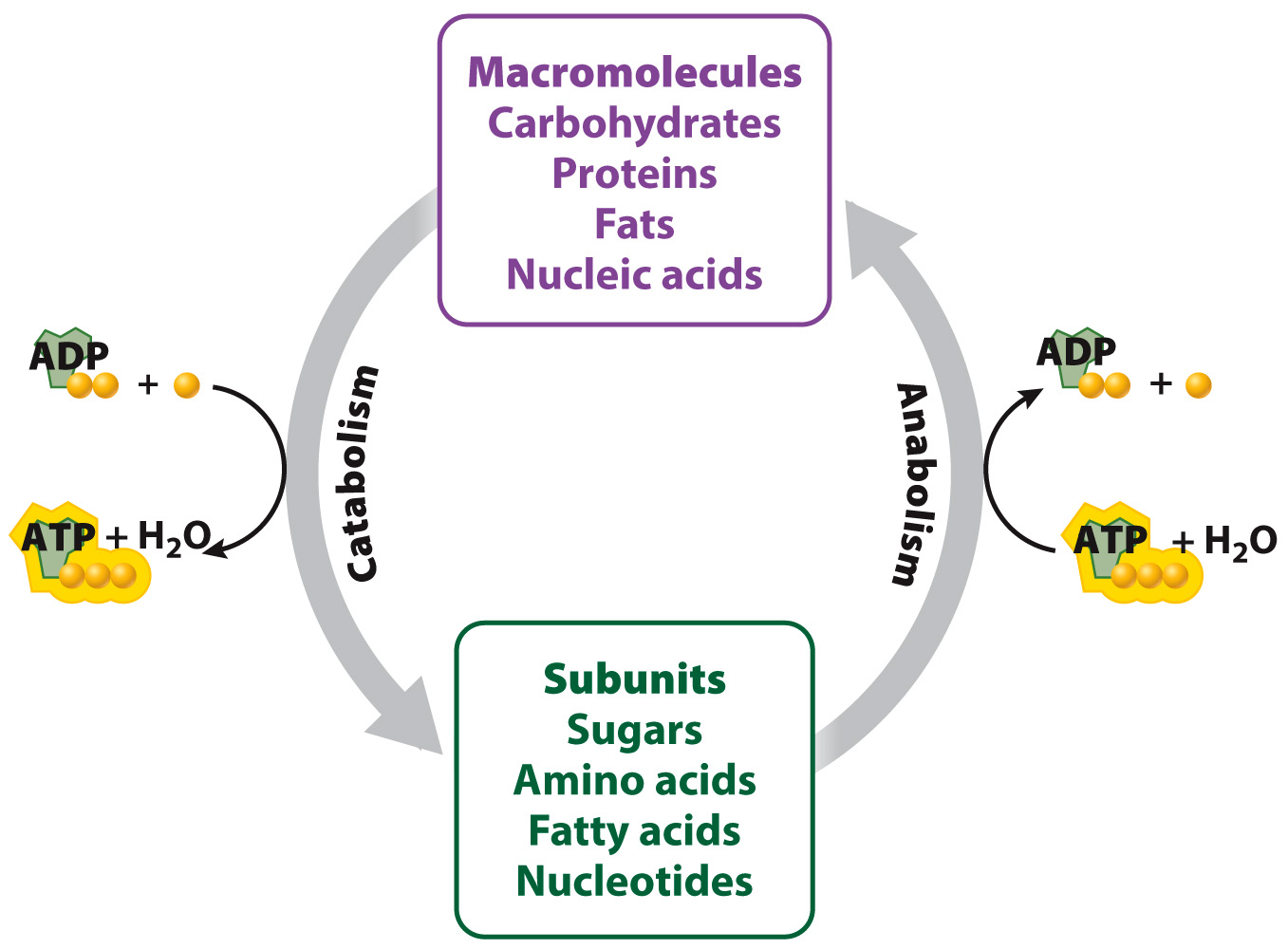Metabolism is the set of chemical reactions that sustain life.
The building and breaking down of sugars such as glucose andthe harnessing and release of energy in the process are driven by chemical reactions in the cell. The term metabolism encompasses the entire set of these chemical reactions that convert molecules into other molecules and transfer energy in living organisms. These chemical reactions are occurring all the time in your cells. Many of these reactions are linked, in that the products of one are the reactants of the next, forming long pathways and intersecting networks.
Metabolism is divided into two branches: Catabolism is the set of chemical reactions that break down molecules into smaller units and, in the process, produce ATP, and anabolism is the set of chemical reactions that build molecules from smaller units and require an input of energy, usually in the form of ATP (Fig. 6.2). For example, carbohydrates can be broken down, or catabolized, into sugars, fats into fatty acids and glycerol, and proteins into amino acids. These initial products can be broken down further to release energy stored in their chemical bonds. The synthesis of macromolecules such as carbohydrates and proteins, by contrast, is anabolic.

118